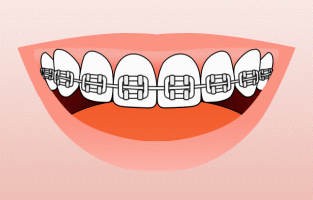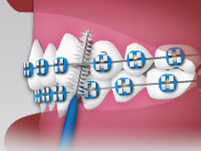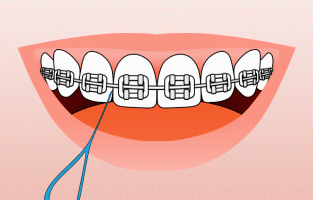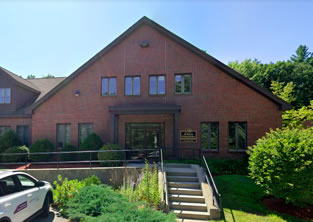Life with Braces

Teamwork!
I am so proud of my team! They all work hard to maximize progress for you at each visit. After all, we actually want the same thing you do - to finish with a great smile and healthy bite! You are actually part of our team, too. In fact, doing your part with brushing, flossing, avoiding certain food, wearing elastics - all keep your treatment moving well too. We can’t do it alone.
Proper care of your braces and teeth keeps your treatment trouble-free and moving as planned, and this helps you finish with the best results. Please call my office if you have any questions or would like additional in-office instruction at any of your visits.
What should having braces feel like?
- Your lips and cheeks will feel bigger to you, but you actually look the same.
- You may notice that your teeth and mouth feel tender or sore, especially by the end of the day. This is perfectly normal. After two to three days, the general soreness will lessen. You can follow the Comfort Recommendations that were given to you.
- You may develop irritations on your lips, cheeks, and tongue. Warm salt water rinses (1/4 teaspoon of salt dissolved in 8 oz. of lukewarm water) work very well to heal these. Great brushing and flossing will keep the bacteria at bay, and don’t forget to use wax.
Foods and Habits
We are committed to helping you stay on track for your treatment so you’ll be eating popcorn, chewing gum, and biting into apples again! Here are some braces-friendly recipes that have a twist on something familiar! There are still MANY foods you can still enjoy. Click here to see a list of items we recommend avoiding.
Foods you CAN eat with braces
- Dairy: soft cheese, pudding, milk-based drinks, yogurts, cottage cheese, eggs
- Breads: soft tortillas, pancakes, muffins without nuts
- Grains: pasta, soft cooked rice
- Meats/poultry: tender meats, meatballs, lunch meats
- Seafood: any and all!
- Vegetables: mashed potatoes, steamed veggies, beans
- Fruits: applesauce, bananas, fruit juice, smoothies, berries
- Treats: ice cream (no nuts please), milkshakes, Jell-O, plain chocolates, peanut butter cups, brownies, soft cookies.
Habits to avoid with braces
- Pen chewing
- Nail biting
- Chewing on your mouthgaurd
- Smoking
- Picking at your appliances
Brushing & Flossing with Braces
It is very important to brush two to three times per day (two minutes each time) and to floss once a day. Keeping your teeth and gums healthy means a healthy bite and a beautiful smile at the end of treatment.
But did you know that consistently average to poor oral hygiene can actually slow down tooth movement? We all know plaque leads to tartar and cavities, but before it gets that far, your gums react by turning red and puffy. When this happens, your teeth will have more tissue to move through. This takes longer, and requires more force. Healthy teeth and gums will also make your adjustments more comfortable, and efficient.
Please continue to seeyour dentist and hygienist for routine cleanings. Sometimes more frequent cleanings are advised.
Elastics
Elastics are prescribed to move groups of teeth together; braces and wires cannot do it alone. Following our instructions on these will help you finish well, and avoid lengthier treatment times. If you ever need more, we can even mail them to you. For more information, click here!
Athletes and Musicians
Athletes. We recommend wearing a mouthguard to protect your teeth and braces. Ask us for your complimentary orthodontic mouthguards while you are in treatment.
In case of a sports emergency, be sure to check your mouth and your appliance immediately for any damage that may have occurred. If you notice any loose braces or broken wires/appliances, please contact our office to seek advice on what to do. If you are not in braces and have loosened teeth, please contact your dentist.
After your treatment is finished, please return to a more fitted mouthguard, such as a boil-and-bite type; these are typically found in any sports store. You can also ask your dentist if their office makes custom mouthguards.
Musicians. The advice from all our wind and horn instrument players is: Don’t shy away from practicing because that will prolong your adjustment period. It is normal to have to re-learn proper lip position, and sores can develop, but using wax and warm salt-water rinses will help your lips and cheeks adjust.
Oral Hygiene
Your oral hygiene matters so much to us that it’s the first thing we check when you come in for your appointments! Did you know that in addition to cavities, poor hygiene can actually slow down your orthodontic progress? If you ever need a review on techniques, just ask! Check out some of our handy tips below.
Also, don’t forget to keep seeing your dentist and hygienist during orthodontic treatment!
- Brushing Instructions
- Flossing Instructions
- Brushing Aligners
- Brushing and Flossing Expanders & Space Maintainers
Brushing with Braces
Pay close attention to the areas around your brackets or other appliances. Brush your teeth for at least two to three minutes, two to three times a day. Use a soft-bristled, small-headed toothbrush and fluoride toothpaste. Be aware that plaque Brush your teeth’s chewing surfaces and the inside surface of your front teeth using short, gentle, back-and-forth motions.


Remember to use your Christmas tree brush each time you brush. This removes plaque and debris under the wire between all the braces. This should be done even if you use an electric brush.
Tips:
- Find the times of the day when you’re not rushed. After school or work? Right after dinner? Or maybe you’re a morning person?
- Make a routine - not just the time when you brush, but also how you brush.
- Start with your front teeth, which don’t get as much attention as your back teeth. Then brush your back teeth, finish with the front teeth again.
- FYI - Electric brushes and manual brushes work equally well, as long as you focus on proper technique and time.
Flossing with Braces
Flossing after every meal will help keep your teeth and braces clean, which will also help keep your treatment time on track. To floss with braces, use a floss threader or special orthodontic floss to thread the floss behind each wire. Wrap the ends of the floss around your pointer fingers of both hands, leaving a few inches of taught floss between them. Gently slide the floss between each set of teeth using a back and forth motion. Floss the sides of each tooth beneath the gum line to remove plaque and food particles. Repeat this process until you’ve flossed all of your teeth. If you find that your floss is not removing all of the food particles between your teeth and around your braces, ask us about a water flosser!

- Other wonderful alternatives found in pharmacies, grocery stores and online include the Platypus Flosser or SuperFloss.
- Floss your top teeth after school or work and your bottom teeth after dinner; that way you won’t be tempted to skip flossing when you’re tired before bed!
Brushing Aligners
Your aligners should be nearly as clean at the end of two weeks as they were when you opened them on day one. Even though they are plastic, they can accumulate plaque. After brushing your teeth, rinse your toothbrush and brush the aligners for two minutes. Rinse only with cold water. Warm water can distort your aligners. An electric toothbrush works great with a whitening toothpaste! (We don’t advise soaking them in mouthwash.)
Brushing and Flossing Expanders & Space Maintainers
Be sure to keep all the parts of these appliances clean. For expanders, we recommend having a basic WaterPik to help loosen debris, prior to brushing. When brushing your expander, be sure to clean the screw, the plastic and the wires. With Space Maintainers such as lingual arches, Nance appliances, or band and loops, be sure to brush the band, wires and any plastic parts. Believe it or not, you can actually floss routinely with any of these!


